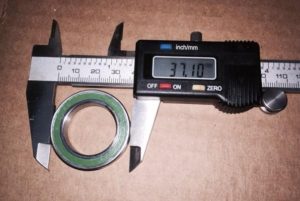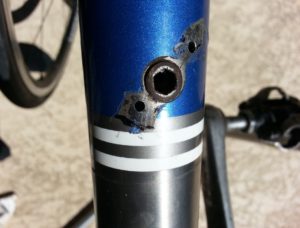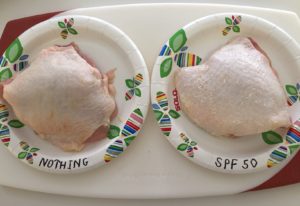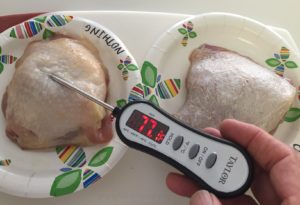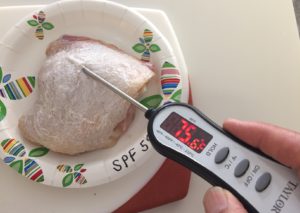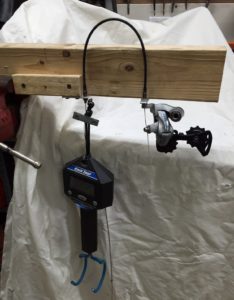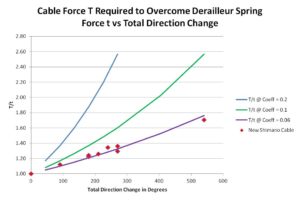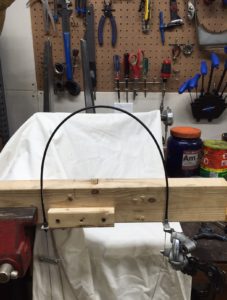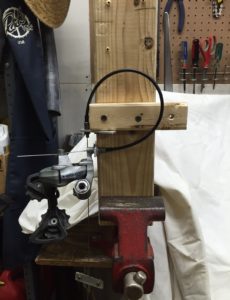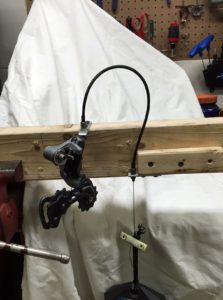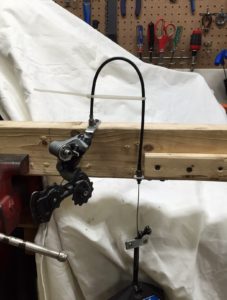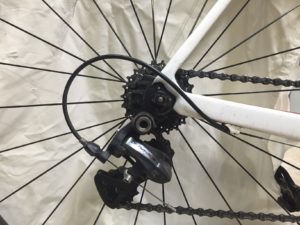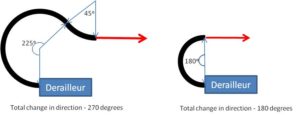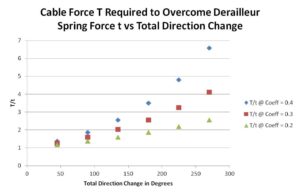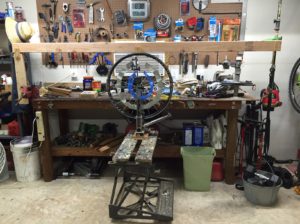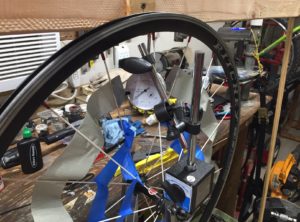The spoked bicycle wheel is a marvelous work of engineering. Spoke tension gives a bicycle wheel its amazing strength. Spoke tension is also responsible for wheel stiffness, and that is what I want to address in this post.
I hope to illustrate that even under severe load conditions, vertical wheel flex is measured in thousandths of an inch. And I will use spoke tension to try to prove my point. This is why I was trying to calibrate my Park TM-1 Spoke Tension Meter when I got off track in my last post.
When you apply tension to a spoke it stretches – a very small amount. The more tension you apply, the more the spoke stretches. In textbooks the tension is called stress and the stretch is called strain. The relationship between stress and strain is called the modulus of elasticity, or Young’s Modulus. Young’s Modulus for steel is ~29 million pounds/inch squared, provided you do not exceed the elastic limit.
All the spokes in a bicycle wheel are under tension. In a perfect front wheel all the spokes are under an identical amount of tension. In a perfect rear wheel all the left side spokes are under an identical amount of tension, and all the right side spokes are under a different identical amount of tension (except for some wheels laced in strange crow’s foot patterns or something.)
I’ll consider a radially laced front wheel for the rest of this post, because the geometry is easier to draw, but it won’t change my conclusions much. I will also assume the spokes are in a plane with the wheel, which they obviously aren’t. They angle out to the left or right, but this makes less than a 2% difference.
What I hope to do is use the amount of tension on an unloaded wheel and on a highly stressed wheel to show that the rim and hub stay at the same distance from each other within thousandths of an inch.
Back to my stressed spoke. A well tensioned steel spoke would be under a tension of about 200 lbs force, more or less. We can calculate the stress by knowing the cross-section of the spoke, and then calculate the strain by knowing the length. A 2mm round spoke tensioned to 200 lbs would be under a stress of ~41,000 lbs/inch squared. A 280mm (11″) long spoke undergoing this stress of 41,000 lbs/inch squared will lengthen (strain) about 0.016″. If we release all the tension in this spoke, it will shorten back to its original length.
Picture each spoke as a very stiff spring connecting the rim to the hub. In an earlier post I defined spring rate and its inverse, compliance, in relation to a tire. I calculated that a tire has a compliance of about 0.0025 inches per pound. If we make the same calculation for the spoke above we arrive at a compliance of 0.00000038 inches per pound. This is about 6500 times stiffer or less compliant than a tire.

Here comes the trick – I am only concerned with the spoke that is pointing straight down at any time. It doesn’t matter what all the other spokes are doing. Yes, all the other spokes are responding to the applied forces, but their tension changes do not affect this analysis. By knowing the change in length of the downward pointing spoke, we know the change in distance between the hub and the rim.
If you hit a bump that pushes the rim toward the hub hard enough to completely relax the downward pointing spoke (And it takes a really, really nasty bump to do that. It will never happen in normal riding.) the rim will have moved relative to the hub 0.016″ (The thickness of three to four sheets of paper). Meanwhile the tire has compressed about a half inch! So don’t worry about vertical stiffness of your rims. They are plenty stiff enough.
Quick aside: Have you ever heard a loud snapping or cracking sound when you hit a sharp pothole or railroad track? It sounds like a spoke popped or the rim broke, but inspection reveals no damage. That is the sound of a spoke that has gone slack, snapping back into tension.
Why do we think we can feel that some rims are stiffer, some more comfortable, or more lively, or whatever? Maybe it is as Jobst Brandt described it over thirty years ago in his book The Bicycle Wheel:
“Stiffness, in its various forms, is a subject often discussed by bicyclists with a regard to components as well as frames. Stiff wheels are often mentioned with approval. However, it should be noted that a bicycle wheel is so rigid that its elasticity is not discernible because the tires, handlebar, stem, frame and saddle have a much greater combined elasticity. Therefore, the differences between well constructed wheels are imperceptible to a rider. The “liveliness” attributed to “stiff” wheels is an acoustic phenomenon caused largely by lightweight tires at high pressure and tight spokes with a high resonant frequency. This mechanical resonance can be heard, and possibly felt in the handlebars, but it is not related to the wheel stiffness.”
Now I ‘m heading out to the garage to take some tension measurements in support of the above. I plan to use resonant frequency to measure spoke tension, as recommended by my good friend Candyman. Wish me luck.
Killa
